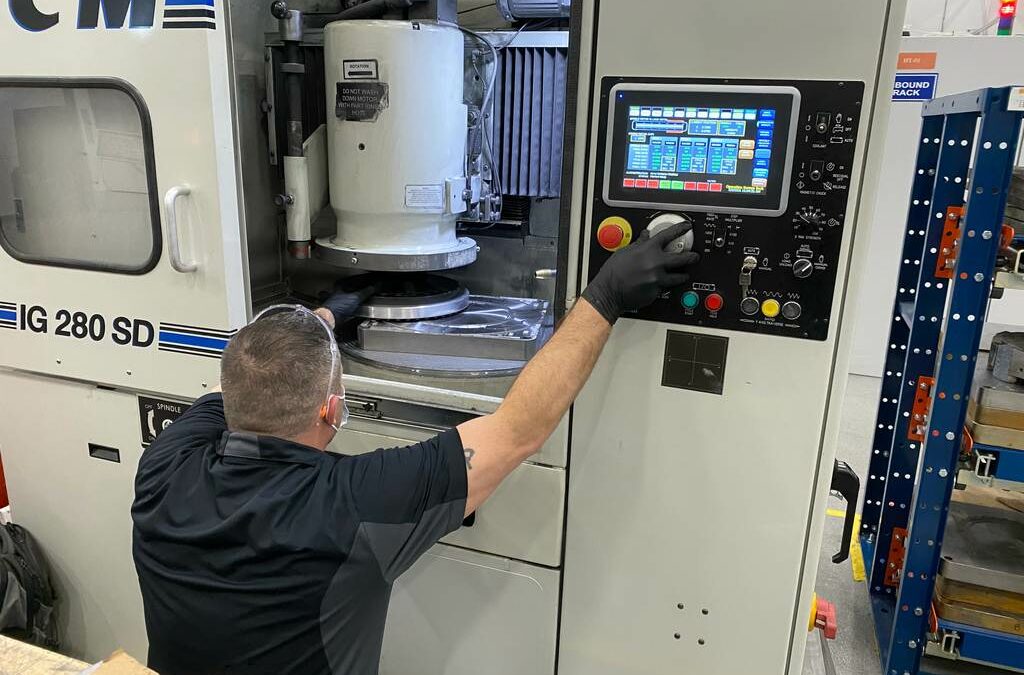Technical writer, Del Williams examines advanced rotary surface grinders and how they can enable efficient, precise resurfacing of the metal additive manufacturing build plate, improving productivity and quality.
Industries like aerospace and automotive are increasingly relying on metal Additive Manufacturing (AM) to expeditiously create weight-saving components with complex geometries, different material properties, and minimal setup times. To construct each part, advanced 3D printers melt, or partially melt, ultra-fine layers of metal powder on build plates. After each metal part is finished, it is cut from the build plate.
However, one production bottleneck in AM is that any residual metal must be entirely removed before the build plate can be re-used. This requires precisely resurfacing the build plate so that is completely flat, level, and correctly textured prior to printing the next part. Unfortunately, traditional methods of accomplishing this task have significant drawbacks and have become a production bottleneck.
The finishing touch
Enter advanced precision rotary surface grinders, which have long been used in metalworking and glass grinding to create perfectly flat, parallel surfaces. The equipment is ideally suited to the AM process and quickly and accurately removes any residual metal from the build plate surface, restoring it to precise dimensions.
The most advanced units even offer automation that allows minimally experienced operators to set them up and then attend to other tasks. This comprehensive approach is helping to exponentially speed build plate resurfacing, boost AM production, and improve quality.
“With advanced rotary surface grinders, our AM build plate resurfacing process is significantly more efficient, precise, and flexible. Incorporating the units in our process will help us handle high expected growth in the AM market,” says Doug Hedges, chief technology officer of Beehive3D, an additive manufacturing provider for industries such as aerospace, defence, and turbine technologies. The AM contact manufacturer currently has five US locations and is expanding nationally.
According to Hedges, it is critical in Beehive3D’s laser powder bed fusion process to resurface the build plate to precise process tolerances prior to re-use.
“Not only do you have remnants of metal on the build plate, but also portions of the build plate can become bowed or distorted so it needs to be resurfaced after each use to keep it flat and parallel,” he states.
Read more: Build plates build back better with rotary surface grinding





